- Home
- Ian Buruma
Year Zero Page 16
Year Zero Read online
Page 16
The story preceding this overwrought finale is wholly typical of the times. The wife, Tokiko, not knowing whether her husband is still alive, tries to feed herself and their little son with the pittance she earns as a seamstress. When the son becomes seriously ill, she has no money to pay for the hospital, and so decides to sell herself for one night to a stranger. When her husband, Shuichi, finally comes back, Tokiko confesses her one lapse into prostitution. Enraged about his wife’s infidelity, Shuichi becomes obsessed. But fidelity is not really the main point: it is the defeated soldier’s struggle to regain a sense of self-respect that drives his fury. The movie is highly realistic, except that in real life the marriage may not have been saved in a tearful reconciliation.
Letters submitted to the newspapers show how deep the problems of repatriation were. The celebrated novelist Shiga Naoya published a letter in the Asahi newspaper on December 16, 1945, in which he suggested that the government had a duty to reeducate former kamikaze pilots. How could young men, taught how to commit suicide for the glory of the nation, possibly be equipped to rebuild their lives in the cynical, dog-eat-dog world of 1945? The only way to prevent them from sinking into despair and being called degenerates was for the state to initiate a special education program. A letter in response agreed, but pointed out that Japanese society itself was badly in need of reeducation. One letter writer, a man who had been trained to be a suicide pilot himself, stated that the wartime training and spirit of the Tokkotai were precisely what was needed in the degenerate culture of postwar Japan.
One of the most poignant letters to the Asahi was by another ex-soldier, published on December 13:
Fellow veterans! Now we are free. We returned from the dark and cruel military life, from the bloody fields of battle. But awaiting us back home were the sharp eyes of civilians filled with loathing of the militarists, and we found our home towns destroyed by the fires of war . . . The bloody battles are over, but life’s real battle has only just begun . . .11
In fact, he writes, his youthful illusions had already been dashed by life in the army, with its selfish and bullying officer corps whose pompous preening about loyalty to the nation and other high-flown ideals was shown to be utterly vapid. The common soldier was reduced to a machine. And now, he writes, “the veteran soldier has become synonymous with the bad guy . . .”
“What are the true feelings of the people towards us veterans?” asks another writer on the same day. “People think a soldier is the same thing as a militarist. Of course, the militarists should take responsibility for our defeat in war. But the ordinary soldier was not like that. He was just a patriot fighting for his country. Do you really believe that we cast away our young lives to fight on the battle fields or in the Pacific just for our own profit or desire? I would really like people to show more warmth towards us veterans.”12
Such sentiments would surely resonate with American veterans of the Vietnam War. But even the victors in a war that was almost universally regarded as just had problems readjusting to civilian life when they came back home. William “Bill” Mauldin was the most popular cartoonist in the U.S. Army. His irreverent drawings in the Stars and Stripes of Willy and Joe, two GIs coping with army life on the European front, made him a hero among the GIs, or “dogfaces.” Willy and Joe talk like regular soldiers, and think like them too. What they thought was often not flattering to superior officers, which earned Mauldin a dressing down from General Patton, who threatened to have his “ass thrown in jail.” In June 1945, Willy was on the cover of Time magazine, looking tired, unshaven, disheveled, a cigarette dangling from the left corner of his mouth, far from the heroic image of the warrior.
Back Home (1947) is Mauldin’s account in words and cartoons of Willy and Joe’s homecoming. The troubles they face, shown in Mauldin’s drawings, and the attitudes they convey are softer versions of some of the sentiments expressed by veterans in the letters to the editor of Japanese newspapers. The resentment of the upper ranks, for example: Willy and Joe in loose-fitting civilian suits are standing at a hotel desk waiting to be checked in as a sullen-looking porter in an outfit of striped trousers, cap, epaulettes, and gold buttons is carrying their suitcases. Joe: “Major Wilson, back in uniform, I see.”
Willy and Joe’s ill feeling does not burn quite as fiercely as the hatred felt by Japanese soldiers toward the officers who sent tens of thousands on suicide missions, or killed them to consume their flesh when food ran out under enemy fire in New Guinea or the Philippines. But Mauldin’s point that a bad soldier mostly does damage to himself while “a bad officer can cause a considerable amount of misery among his subordinates” would have rung equally true.13
Closing the gulf between military and civilian life was a painful process, for battlefield heroes as much, if not more, as it was for men of no great fighting distinction. To wives and girlfriends, the returned soldiers did not always seem heroic enough. In one cartoon, Willy is shown dressed in a scruffy business suit, rather awkwardly carrying the wartime baby he had never seen before. His wife, in dressy hat and gloves, remarks: “I was hoping you’d wear your soldier suit, so I could be proud of you.” In Mauldin’s words: “Mrs Willie, who had been in college when Willie met her, had shared with her feminine classmates a worship of fancy uniforms during the early and glamorous stages of the war. She had always felt a little disappointed in Willie because he hadn’t become an officer with a riding crop and pink trousers.” He didn’t even have medals. So, Mauldin continues, not only “was she deprived of the pleasure of strutting with his medals, but she suddenly realized that she had never seen him in civvies before, and he did look a little baggy and undistinguished.”14
It is not surprising that some veterans, disillusioned or unequipped for civilian life, or traumatized by battlefield brutality, would commit violent acts. This happens after all wars. But in the first year after World War II these acts were given exaggerated attention in the press. Willy’s wife is shown reading a newspaper, headlined “Veteran Kicks Aunt,” while a dejected Willie sits in his armchair nursing a glass of whiskey. The caption reads, “There is a small item on page 17 about a triple ax murder. No veterans involved.”15 Mauldin points out the sad fact that such lurid headlines “gave added impetus to the rumor that always appears in every country after a war—that the returning soldiers are trained in killing and assault and are potential menaces to society.”
Compared to veterans in Germany or Japan, the problems of returning GIs, though similar in certain respects, might appear to be minor. They were heroes coming back to the richest country on earth, basking in their victory, soon to benefit from government-sponsored education programs made possible by the magnificent GI Bill. But even in America, the men in uniform often failed to live up to the heroic narrative. There was one important difference, however, between the victorious nations and the defeated, the effect of which lasted much longer than the hardships that follow any devastating war. Germans and Japanese were disenchanted with the heroic ideal. They wanted nothing more to do with war. British and Americans, on the other hand, could never quite rid themselves of nostalgia for their finest hours, leading to a fatal propensity to embark on ill-advised military adventures so they and their nations could live like heroes once more.
• • •
WHAT ABOUT THOSE MEN who didn’t want to go home?
The Drau Valley in Carinthia, a rural part of Austria known for its stunning Alpine scenery of cool mountain lakes and lush green meadows covered in pine trees and flowers, must have looked like a vision of Eden to the Slovene refugees from Yugoslavia who emerged from a pitch-dark, waterlogged mountain tunnel dug by slave workers for the German army. Others arrived after slogging across rocky, freezing mountain passes. One of them recalled: “It seemed, in this wonderful region, that the majestic, glittering word LIFE shone out and resounded on all sides.”16
A closer look, in the beautiful spring of 1945, at this blessed landscape of picturesque v
illages and country churches, would have revealed something stranger and more disturbing. The Drau Valley was filled with camps and shantytowns, the makeshift quarters of tens of thousands of people, former soldiers, as well as women and children, together with their horses, oxcarts, and even camels. There were proud Cossacks in tall sheepskin hats; Slovenian peasants; Serbian Chetniks, some royalist, some fascist, some a bit of both; Croatian fascists from the dreaded Ustaša; Ukrainians; Russians; ex-POWs from various European countries; and even a few Nazi mass murderers hiding in mountain shacks, such as Odilo Globocnik (“Globus” to his comrades), a Slovenian German who had been responsible for, among other things, setting up the extermination camps in Poland. A reporter from the Times of London compared this crowd of exhausted refugees, mostly fleeing from Tito’s communist Partisans, or from the Soviet Red Army, to “a mass migration like that of the Ostrogoths 1,500 years earlier.”17 In the words of Nigel Nicolson, a British intelligence officer and later a well-known London publisher, Carinthia was “the sump of Europe.”18
Carinthia, occupied by the British Army, was a fitting venue, in a way, for the miseries of mass migration, since its own recent politics had been so typical of the kind of ethnic nationalism that had caused a human and cultural catastrophe in Europe. Much of the population in the south of Carinthia was Slovenian. The Gauleiter (Nazi regional governor) during the war, a German-speaking Carinthian named Friedrich Rainer, had tried to “Germanize” the south by forcing people to speak German, or by simply deporting the Slovenes and replacing them with people of Germanic stock. At the end of the war, Tito’s Partisans invaded the area and claimed it for Yugoslavia, until they were pushed back by the British Army.
But this was just a small part of the problem in “the sump of Europe,” filled with people, civilians, and soldiers who either did not wish to return to their countries, or had no home to go back to. Nigel Nicolson observed:
There seemed to be no limit to the number of nationalities which appealed to us for our protection. The Germans wanted to be safe-guarded against Tito, the Cossacks against the Bulgarians, the Chetniks against the Croats, the White Russians against the Red Russians, the Austrians against the Slovenes, the Hungarians against everybody else, and vice versa throughout the list . . . Not only was [Carinthia] the last refuge of Nazi war-criminals, but of comparatively inoffensive peoples fleeing from the Russians and Tito, unwanted and all but persecuted wherever they went.19
Worse than persecuted, in many cases. The Slovenes, Croats, and Serbs who had fought Tito’s communists, sometimes on the side of the Germans, sometimes not, expected torture and death if they were delivered to their archenemy in Yugoslavia. Cossacks, many of whom had already fought the communists once in the civil war after 1917 and spent their lives since then as waiters, taxi drivers, or writers for obscure émigré journals in various European capitals, knew that execution or slow death in the gulag awaited them in the Soviet Union. Similar fears haunted Ukrainians who had foolishly—but not inexplicably—latched on to Hitler in the hope of getting rid of Stalin. These fearful expectations would all come true. What they hadn’t expected was that the British, whom they thought of as the most gallant, decent, generous people in Europe, would force them on their way.
In the Austrian town of Bleiburg, on the Yugoslav border in southern Carinthia, Brigadier T. P. Scott, commander the 38th (Irish) Brigade, received a report on May 14 that two hundred thousand men from the Croatian army, accompanied by half a million Croatian civilians, were approaching the British lines. Meeting their representatives, Scott, by all accounts a compassionate man, had to tell them that they could not possibly be allowed to enter Austria. There was no room for them. They would starve. All right, some replied, then they would starve. Others wondered whether they might not be able to move to Africa, or America. No, that would not be possible, either. Then they “would rather die where they were, fighting to the last man, than surrender to any Bolsheviks.”20
It took a lot of persuasion, but eventually the Croats, thirsty, unfed, at the end of their tether, agreed to surrender to the Titoists (or “Tits” as the British called them). They were promised that the men would be treated properly as POWs, and the women would be returned to their homes in Croatia. Brigadier Scott could rest assured.
The precise facts of what actually happened might never be known. Accounts from the few survivors are bitter, and possibly exaggerated. But they offer a flavor of how they were treated. On May 15 and 16, according to some accounts, ten thousand soldiers and officers were gunned down on the Yugoslav side of the border and thrown into ditches. On May 17 a “death march” began along the Drau (or Drava) River towards Maribor in Slovenia. In one version of the story, “tens of thousands of Croatians were grouped in a number of columns, their hands tied with wire . . . Then starved, thirsty, emaciated, disfigured, suffering and agonizing, they were forced to run long distances alongside their ‘liberators,’ who were riding on horses and in carts. Those who could not endure such a running ‘march’ were stabbed, beaten to death or shot, then left on the roadside or thrown into a ditch.”21 Another account estimates that “about 12,000 Croatians” were buried in the ditches. “Because the blood started to soak through the ground, and the ground itself started to rise due to the swelling of dead bodies, the partisans covered the soil with an alkaline solution, more soil, and then leveled the ground with tanks.”22
Even if these stories are discolored by hatred, there is no doubt that large numbers of people were murdered by Tito’s Partisans, not just Croats on their death marches, but Serbs and Slovenes, too, who were machine-gunned in the dense and beautiful forest of , where the wild boar, lynx, and red deer still roam. They had arrived there, as prisoners of the communists, because the British had put them on trains to Yugoslavia, telling them they were bound for Italy. Revealing their real destination would have created the kind of pandemonium that the British troops tried everything to avoid.
The British justified their policy of handing Russian and other anticommunists back to their enemies, by subterfuge if necessary, and sometimes by force, by telling themselves that these Croats, Serbs, Slovenes, White Russians, and Ukrainians were, after all, traitors, men who had fought on the side of the Germans. In short, they were enemies not just of the Soviet Allies, but of the British too. Aside from the fact that women and children could hardly be classified as enemy combatants, things were never quite so simple.
It is true that up to 10 percent of the soldiers in German uniform captured in France after the Normandy invasion were Russians. But these Russians, most of whom didn’t speak a word of German, and were happy, indeed relieved, to surrender to the British, had rarely been motivated by any enthusiasm for Hitler’s cause. Many had been POWs captured on the eastern front. Those who had survived the deliberate German policy of starving Soviet prisoners to death were given a brutal choice in 1943, when the Germans were desperately short of manpower: either join the German army in special foreign battalions or die.
The case of the Cossacks was more complicated. Their senior officers, veterans of the Russian Civil War, now in their sixties, saw the Nazi invasion of the Soviet Union as their last chance to reclaim traditional Cossack lands, where they could live as their grandfathers did, as a kind of eighteenth-century warrior caste. The Germans promised to help them if they would fight on the German side, and so they did, as a ferocious band of soldiers, bearing the bejeweled daggers and curved swords of their forebears. It was a romantic, misguided, and often savage quest to restore a way of life that was probably lost forever. They fought in the Soviet Union, and when forced to retreat, in Yugoslavia, they were accompanied by thousands of civilian refugees who could no longer stand to live under Stalin. At the end of the war, when the Germans—like the Japanese in Southeast Asia—were handing out territories to collaborating regimes as last-minute bribes to keep fighting, the Cossacks were told they could establish “Cossackia” in the Italian Alps. Once the British arr
ived, the Cossacks, declaring that the Soviet communists were their enemies and not the British, decided to abandon Cossackia and cross into the idyllic valleys of Carinthia.
It is claimed that the behavior of the Croatian fascists, led by the stony-faced Ante , was so atrocious that even the Germans were shocked. The Italian journalist Curzio Malaparte, whose accounts were often colored by a vivid imagination, reported an interview with during which he spotted a wicker basket on the dictator’s desk, filled with small, round, slimy objects, juicy mussels perhaps, or oysters. Asked whether these were indeed the famous Dalmatian oysters, replied with a thin smile that they were forty pounds of Partisans’ eyes gifted to him by his loyal Ustaša.
The Ustaša were extraordinarily brutal, as were Tito’s Partisans, the Slovenian Home Guard, and the Serbian Chetniks. But their war cannot be neatly slotted into a war between Allies and Germans, democrats and fascists, or even communists and anticommunists. They were parties in several civil wars going on at the same time fought along ethnic, political, and religious lines: Croatian Catholics versus Orthodox Serbs versus Muslim Bosnians versus Serbian royalists versus communist Partisans versus Slovenian Home Guardsmen versus Slovenian communists. Ideology—fascist, communist, Nazi—was only part of the story. All sides made deals with outside powers, including the German invaders, as long as it suited their domestic purposes. How was a British soldier, faced with former Chetniks and Partisans, both of whom had been allies against the Germans at one point or another, to know whom to treat as a friend or enemy?

 A Japanese Mirror
A Japanese Mirror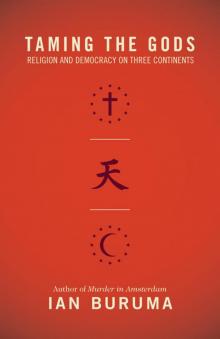 Taming the Gods
Taming the Gods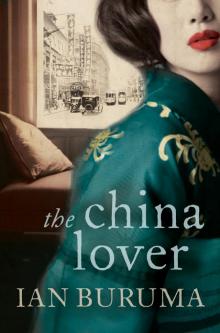 The China Lover
The China Lover A Tokyo Romance
A Tokyo Romance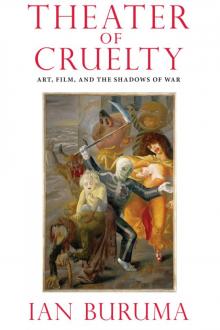 Theater of Cruelty
Theater of Cruelty Year Zero
Year Zero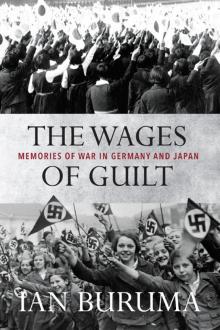 The Wages of Guilt
The Wages of Guilt Murder in Amsterdam
Murder in Amsterdam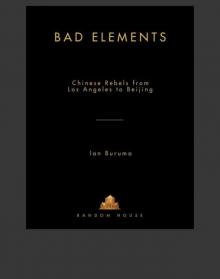 Bad Elements
Bad Elements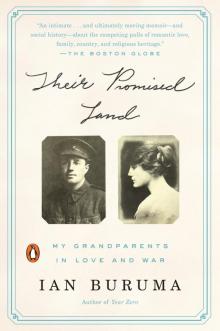 Their Promised Land
Their Promised Land Occidentalism
Occidentalism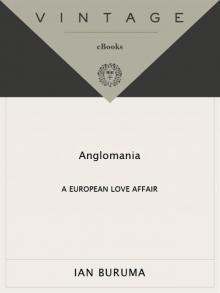 Anglomania
Anglomania Inventing Japan: 1853-1964 (Modern Library Chronicles)
Inventing Japan: 1853-1964 (Modern Library Chronicles) The Missionary and the Libertine
The Missionary and the Libertine